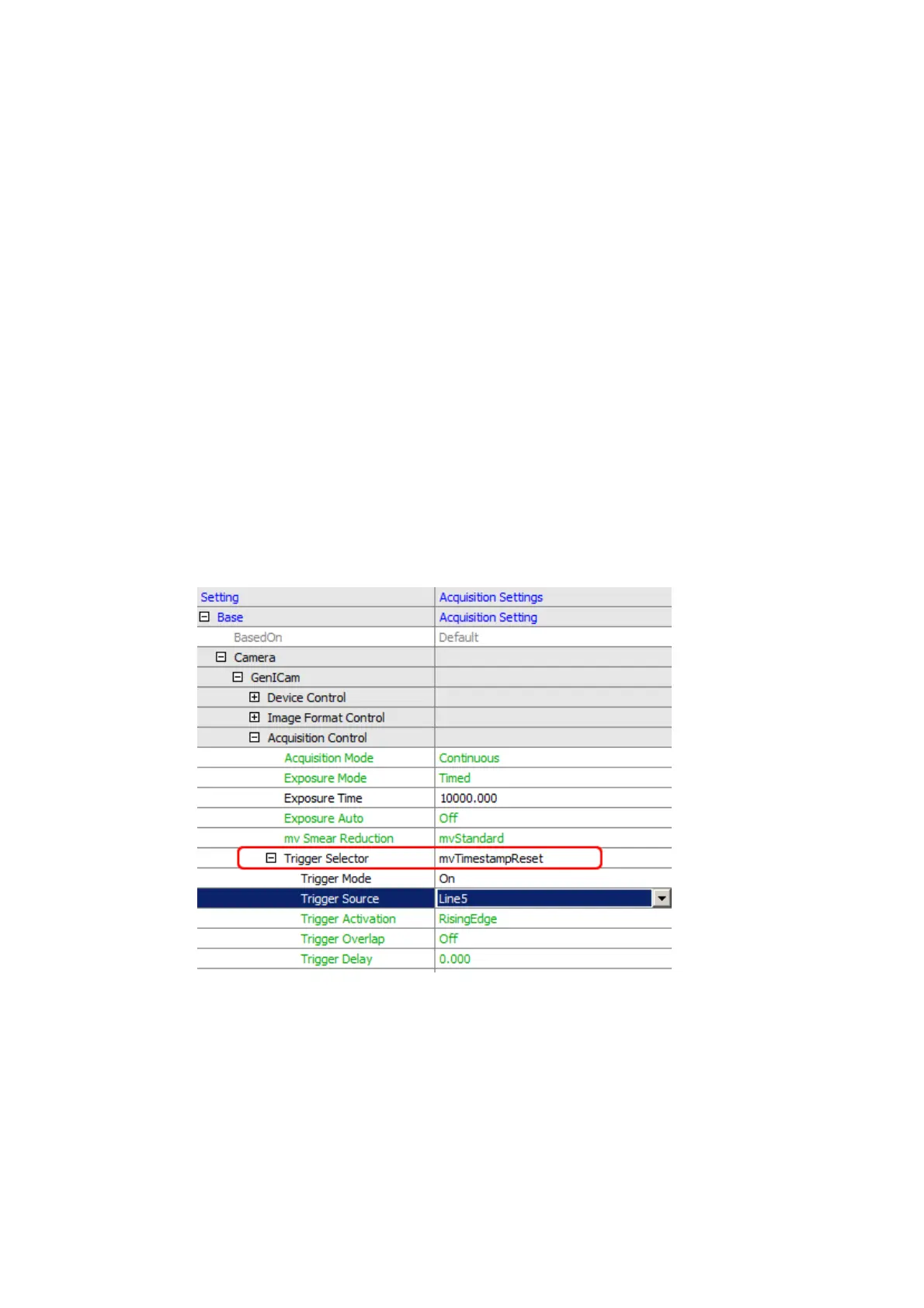18.9.2 Synchronizing camera timestamps without IEEE 1588
18.9.2.1 Introduction
Camera timestamps are a recommended Genicam / SFNC feature to add the information when an
image was taken (exactly: when the exposure of the image started).
Without additional synchronization it is merely a camera individual timer with a vendor specific
increment and implementation dependant accuracy. Each camera starts its own timestamp
beginning with zero and there are no means to adjust or synchronize them among cameras or host
PCs. There is effort ongoing to widely establish the precision timestamp according to "IEEE 1588"
into GigE cameras. This involves cameras which are able to perform the required synchronization
as well as specific network hardware and driver software and procedures to do and maintain the
synchronization.
There are many applications which do not or cannot profit from "IEEE 1588" but have certain
synchronization needs. Solutions for these scenarios are describes as follows.
18.9.2.2 Using and resetting timestamp
First of all the standard does not provide hardware means to reset the timestamp in a camera other
than plug off and on again. Therefore MATRIX VISION has created its own mechanism
mvTimestampReset to reset the timestamp by a hardware input.
Figure 1: mvTimestampReset
This can be elegantly used for synchronization purposes by means of wiring an input of all cameras
together and reset all camera timestamps at the beginning by a defined signal edge from the
process. From this reset on all cameras start at zero local time and will increment independently
their timestamp so that we achieve a basic accuracy only limited by drift of the clock main frequency
(e.g. a 1 MHz oscillator in the FPGA) over time.
In order to compensate for this drift we can in addition reset the timestamp every second or minute
or so and count the reset pulse itself by a counter in each camera. Assuming this reset pulse is
generated by the master camera itself by means of a timer and output as the hardware reset signal
for all cameras, we now can count the reset pulse with all cameras and put both the count and the
18 Use cases
240
